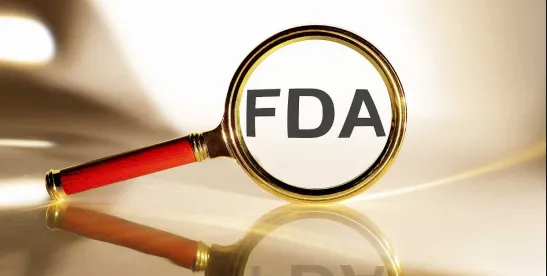The US Food and Drug Administration’s (FDA) formal regulation of food packaging began in 1958 with the Food Additives Amendment to the Federal Food, Drug, and Cosmetic Act. Since that time, the FDA has employed various approaches to evaluate and clear substances for use in contact with food. These approaches have included the formal notice-and-comment rulemaking through the Food Additive Petition (FAP) process, informal Prior Sanction letters, the Threshold of Regulation (TOR) exemption process, and, most recently, the Food Contact Notification (FCN) program.
This article summarizes the information needed to submit an FCN to obtain an FDA clearance for a new food contact substance (FCS) or a new use of an already-cleared FCS.
Background
The FCN program was authorized by congress through the Food and Drug Administration Modernization Act of 1997 in an attempt to streamline the approval process used for clearing new FCS. Until this point, the predominant mechanism for clearing new FCS was the petition process, which was administratively burdensome and took multiple years to complete. Since 2000, the first year FDA accepted FCNs, it has become the predominant method used by industry for obtaining new food contact material clearances and has resulted in over 1,000 new clearances.
Although the amount of data typically required to support an FCN filing mirrors that of FAPs, the FCN program differs from the FAP process in several significant ways. First and most notably, unlike FAP clearances that are applicable to any manufacturer that meets the requirements under the final regulation, FCN clearances are proprietary to the manufacturer of the FCS identified in the FCN and its downstream customers. The proprietary nature of an FCN is in part meant to ensure that all manufacturing processes of an FCS, each with unique impurities, are independently risk-assessed by FDA to confirm safety. Second, instead of a multi-year review period for FAPs, FCNs automatically become effective 120 days after being accepted for filing by the FDA, unless FDA formally objects in writing prior to the effective date. As the 120-day review clock for an FCN only begins after a complete FCN has been accepted for filing, a finding by the FDA that the FCN lacks critical details necessary to support a safety determination has the potential to extend the 120-day notification process.
The critical elements required for a complete FCN include the following administrative, chemistry, toxicology, and environmental information:
- Chemical identity;
- Manufacturing process;
- Purity profile;
- Intended use;
- Stability;
- Migration levels in food;
- Estimated daily intake (EDI) of the FCS and its impurities;
- A safety assessment; and
- An environmental assessment or claim of categorical exclusion.
We touch on each of these elements below.
Chemical Identity
In the context of an FCN, chemical identity information includes the chemical name, Chemical Abstracts Service registry number (if any), chemical formula, structure, molecular weight or molecular weight profile (for discrete substances and polymers, respectively), characterizing spectra, and quality control/production specifications for the finished FCS.
Manufacturing Process
According to Section 409(h)(2)(C) of the Federal Food, Drug, and Cosmetic Act, an FCN is effective for the manufacturer, the FCS, and the conditions of use identified in the FCN. FDA’s Administrative Guidance concerning FCN submissions further clarifies that the identity of the FCS includes the impurity profile of the FCS, such that an FCN is only effective for an FCS that is produced as described in the FCN. Thus, notifiers must include a complete description of the manufacturing process for the FCS. This summary must include all reaction inputs and processing aids, the amounts of each component used in a typical production batch, and the intended function of each substance used in the process. This information is used to establish the “baseline” production process against which any future deviations can be assessed. In the case of a production process that is poorly described, the FDA may seek additional information to ensure that the FCS is consistently produced.
Purity Profile
As noted above, the identity of the FCS includes the impurity profile of the FCS, such that an FCN is only effective for an FCS that is produced as described in the FCN and that has the impurity profile that results from that specific manufacturing process. The only permitted deviations from the process described in the FCN are those that are within good manufacturing practice and do not substantively impact the identity of the FCS or the level or identity of any associated impurities in the finished FCS.
Quantitative information outlining the potential concentration of any reasonably foreseeable manufacturing impurities should be included in the FCN. Potential impurities requiring such detailed assessments include all substances that may remain in the finished FCS, such as residual starting materials, reaction catalysts, processing aids, solvents, and reaction byproducts. All studies evaluating the purity profile of the finished FCS should be comprehensively described and include appropriate calibration and validation information, along with all raw analytical data supporting the analysis. In general, purity information on multiple production batches of the FCS should be included in the filing to account for any process variabilities.
Intended Use
An FCN should clearly identify the manner in which the subject FCS may be used. “Intended use” includes not only the temperatures at which food may contact the material but also the types of food that the FCS may contact (e.g., aqueous, acidic, alcoholic, fatty, or dry) and the maximum use level of the FCS in a finished food-contact article.
Stability
Relevant analytical data supporting any assertions that an FCS is stable under the intended conditions of use should be included in an FCN. If the chemical identity or impurity profile of an FCS is expected to change as a result of hydrolysis, oxidation, thermal deterioration, or other mechanisms, stability studies (and migration test data) should include information concerning the chemical identity of any new impurities that are expected to form as a result of the use of the FCS and the maximum concentration of those substances that may be found in the FCS or in food that contacts the FCS.
Migration Levels in Food
FCNs must include sufficient information to allow for the estimation of potential dietary exposures to the FCS and all of its constituents. Such information may generally include the results of migration studies that simulate the most severe manner in which the FCS may be used in contact with food or the results of studies evaluating the potential concentration of potential impurities within the FCS. In the latter case, migration levels in food are estimated mathematically by considering the specific manner in which the FCS is expected to contact food (i.e., the time, temperature, and food types described in the Intended Use section discussed above). In all cases, analytical data used to support approximations of the potential migration of an FCS to food should be comprehensively described and include documentation concerning appropriate calibration and validation of all analytical methods.
EDI
Potential dietary exposures to the FCS and its constituents are estimated mathematically by considering the fraction of the daily diet that may contact the FCS. For single-use packaging, FDA generally recommends using consumption factors (CF) to convert migration values to dietary concentration (DC) values prior to estimating the daily intake. Current CFs are outlined in FDA’s Guidance for Industry: Preparation of Premarket Submissions for Food Contact Substances.
Although CFs are generally not applicable to repeated-use food-contact articles, similar factors that consider the manner in which nonpackaging materials are used in contact with food may be derived for the purposes of estimating DCs.
The EDI of the FCS and its constituents is approximated by considering the total amount of food and beverage consumed daily for the population (or subpopulation, as applicable) and the typical consumer body weight. In contrast to DCs, which are typically reflected as a concentration in the diet, e.g., parts per billion in the daily diet, EDIs are typically reflected in exposure units such as micrograms per kilogram of body weight per day.
In the context of an FCN submission, when assessing the safety of a proposed use of an FCS, it is of critical importance to consider not only the EDIs for the FCS and its constituents resulting from the proposed use but also the cumulative EDIs resulting from all food-contact sources of the FCS and each of its constituents.
Safety Assessment
Supporting the safety of the FCS for its intended use is the most critical aspect of the FCN. In general, there must be adequate toxicology support to conclude that the intended use of the substance is safe. Unlike the Generally Recognized as Safe exemption from the definition of
food additive, the safety data supporting the FCS need not be published for it to be the basis of a safety conclusion in an FCN.
Notifiers should consider and discuss all relevant safety information, both favorable and unfavorable, for the FCS and its constituents. The safety data will provide a basis for calculating a safe level of exposure for each substance, as determined using appropriate quantitative risk assessment techniques, against which the dietary exposures can be compared. FDA’s Toxicology Guidance thoroughly summarizes the types of safety data required to support a safety determination for substances used in contact with food based on the corresponding exposures.
Environmental Information
The National Environmental Policy Act requires that all federal agencies consider environmental factors in their decision-making and evaluate the potential environmental impacts of official agency actions. Under the FCN program, the proposed use of the FCS must either be the subject of a categorical exclusion under 21 C.F.R. §§ 25.30 or 25.32 or include an Environmental Assessment (EA) that includes a discussion of the need for the proposed action, alternatives to the proposed action, and any foreseeable environmental impacts that may occur as a result of the use and disposal of the FCS. An EA does not need to specifically consider the environmental impacts associated with the production of the FCS.
It is rare for FDA officials to formally object to an FCN on the grounds that the subject FCS is unsafe for its intended use. However, a conclusion that the FCN is “incomplete” is a much more common occurrence. In this regard, if an FCN does not contain sufficient scientific information and data, as described above, to demonstrate that the proposed use of the FCS is safe for its intended use, the FDA can refuse to accept the notification for filing. Accordingly, it is of critical importance to prepare a comprehensive data package supporting an FCN in advance of filing any notification with FDA.





 />i
/>i

